When people think of Illinois, they think of Chicago, where you can see sleek skyscrapers and catch a Cubs game. But the Prairie state actually has incredible biodiversity, with several ecosystems, such as wetlands, forests, prairies, and agricultural land. These diverse habitats support life for thousands of plant and animal species, including some of the speediest creatures on land. Discover the fastest animals in Illinois and some that may surprise you!
Cougar
The cougar, also known as a puma or mountain lion, is a large tan cat found in the Americas. While cougars don’t have breeding populations in Illinois, they occasionally disperse through the state from nearby Rocky Mountain communities in search of new territories. Don’t be surprised if you find one roaming along the highway! This cat species is one of the fastest animals in Illinois, reaching 50 miles per hour and leaping 18 feet high. They have strong, powerful hind legs and large paws that balance their weight and propel them forward. However, they can only reach their max speed for short distances. Their average running rate hovers around ten mph, which they can maintain for several miles.
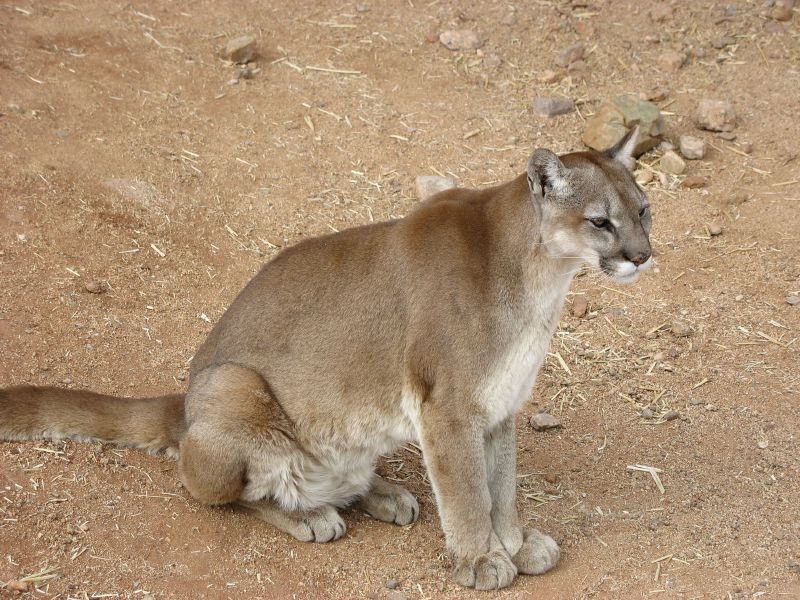
The cougar is one of the fastest animals in Illinois, reaching 50 miles per hour for short periods.
©AskJoanne / CC BY-SA 2.0, from Wikimedia Commons, the free media repository – License
Coyote
Coyotes are medium-sized canines native to North America. Coyotes are relatively common in Illinois, and you can find them in rural, suburban, and urban areas, often trotting through neighborhood streets, backyards, parks, and golf courses. These wild dogs are unafraid of people and domestic animals and can outrun humans and pets. They reach speeds up to 43 miles per hour and can completely clear a six-foot fence when jumping. Their prey, such as rabbits, are super speedy, so they have adapted to keep up or outrun their dinner. If a coyote ever confronts you, do not run away! Instead, yell, wave your arms, and throw something.
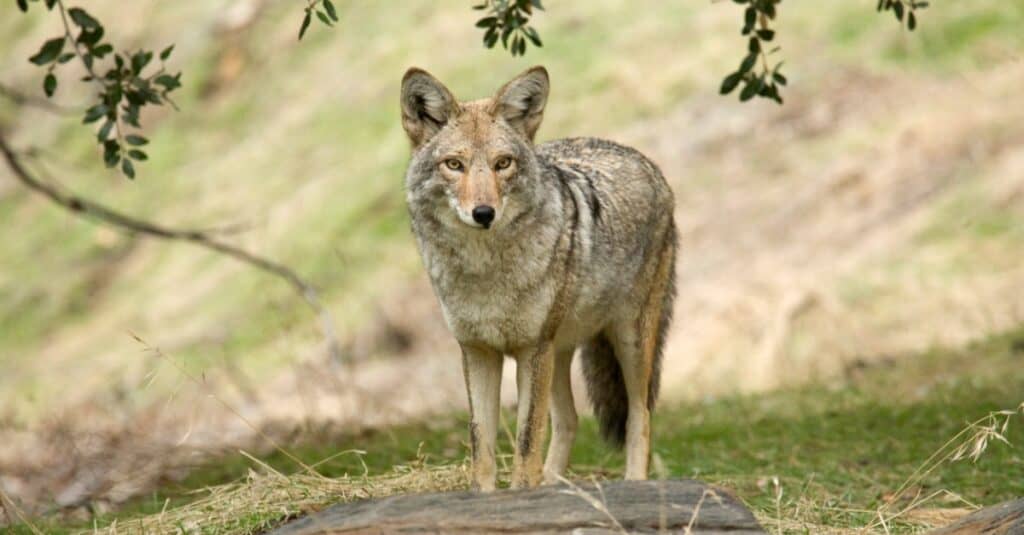
Coyotes are quite common in Illinois and can reach speeds up to 43 miles per hour.
©iStock.com/Fabiomichelecapelli
American Elk
The American elk is an iconic game animal and one of the largest deer species native to North America. Elk were once abundant in the state but were entirely gone by the 1800s. Today they only exist in captivity by private landowners, and no wild populations are present. This terrestrial mammal can run 40 miles per hour (faster than a horse) and jump eight feet vertically. They rely on these speeds for protection but can’t sustain them for long. Their average rate for extended running periods falls around 25 mph. Mature bulls can weigh 700 pounds but are agile creatures that outmaneuver many predators, including humans.
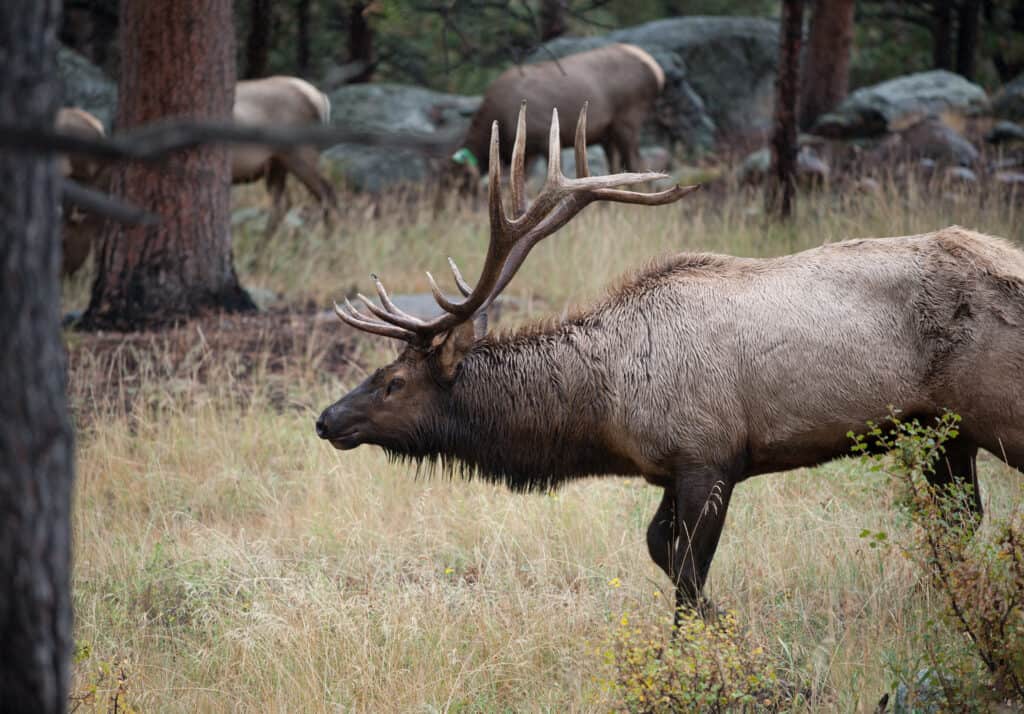
American elk can run 40 miles per hour and jump eight feet vertically.
©Tony Campbell/Shutterstock.com
Northern Cardinal
The northern cardinal is a large songbird with distinctive red and black coloring native to North America. It is the state bird of Illinois and can be found year-round in woodlands, thickets, residential areas, and parks. Surprisingly, the northern cardinal is much faster than previously thought, reaching speeds over 30 miles per hour. Their speed is typically measured during migration, meaning their cruising speed is around this rate. Their max flight speed is unknown. They are strong fliers and migrate long distances. However, most of their flight occurs during foraging as they use their short, round wings to flit from one thicket to another.

The northern cardinal is the state bird of Illinois and can reach speeds over 30 miles per hour during migration.
©Rob Palmer Photography/Shutterstock.com
Bison
Bison are large bovines native to North America and Europe. The American bison was reintroduced to the Illinois countryside after going extinct in the 1830s. Today they happily roam a 1,500-acre preserve in North Central Illinois. Males can weigh up to an incredible 2,200 pounds while remaining fast and agile. These beasts can run 35 miles per hour, jump tall fences, swim, and quickly spin around. They may look serene and docile, but they can become pretty aggressive when they feel threatened. And yes, they can easily outrun humans.
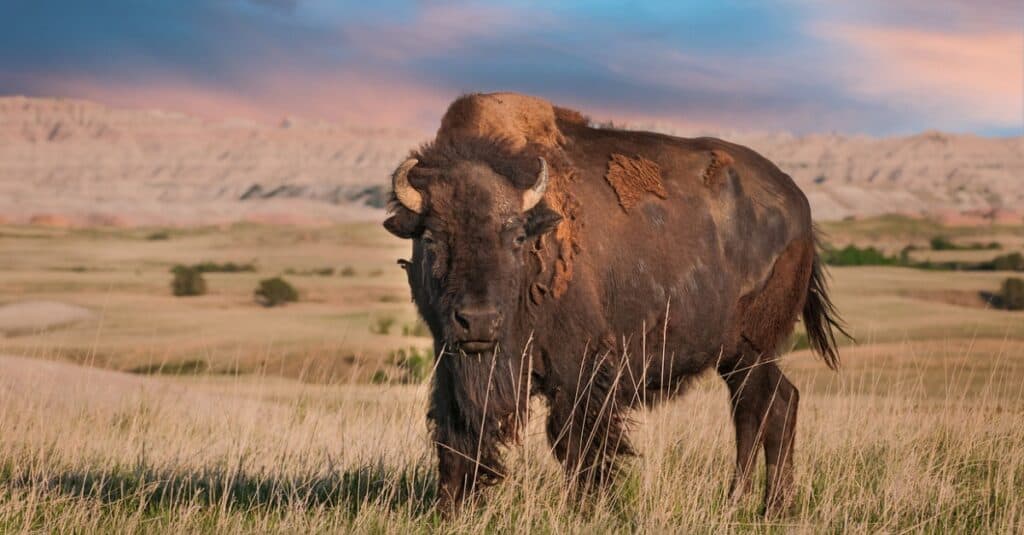
Despite their large size American bison are fast and agile reaching running speeds of 35 miles per hour.
©Geoffrey Kuchera/Shutterstock.com
Black Bear
The American black bear is a medium-sized bear endemic to North America and the continent’s smallest bear species. Black bears became extirpated in Illinois during the mid 1800s, but there is a possibility they may be returning. While there are no wild populations of this species, occasional visitors from neighboring states make their way into Illinois forests. Black bears can run uphill, downhill, or on level ground at a maximum rate of 30 miles per hour. But there are limiting factors, like winter weight. Leaner bears are often faster than those with extra fluff, making it easier for them to escape danger. They use their large, powerful legs to push their 500-pound bodies forward.
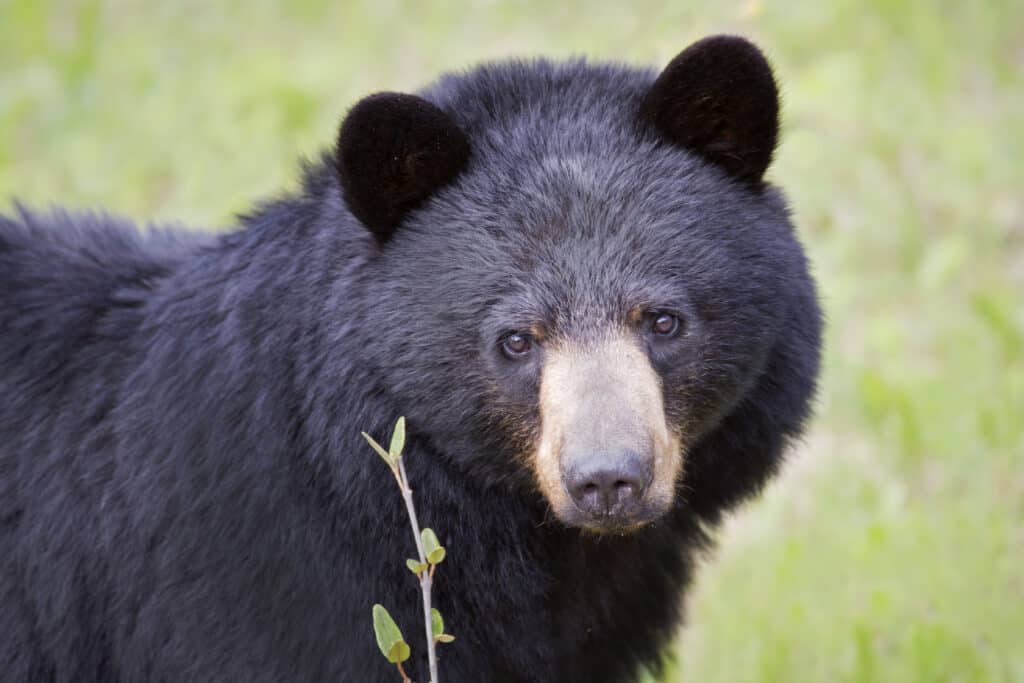
Black bears can run uphill, downhill, or on level ground at a maximum rate of 30 miles per hour.
©Wild Art/Shutterstock.com
Bobcat
Bobcats are medium-sized cats ranging from Southern Canada to Mexico. You can find bobcats across Illinois in wooded bluffs, ravines, forests, and open fields with rolling hills. These wild cats can run 30 mph in short bursts when hunting prey or escaping danger. They are silent, patient stalkers, slowly following after their target for miles before pouncing. And they don’t run long distances, preferring to sprint as they perform spring-loaded attacks.
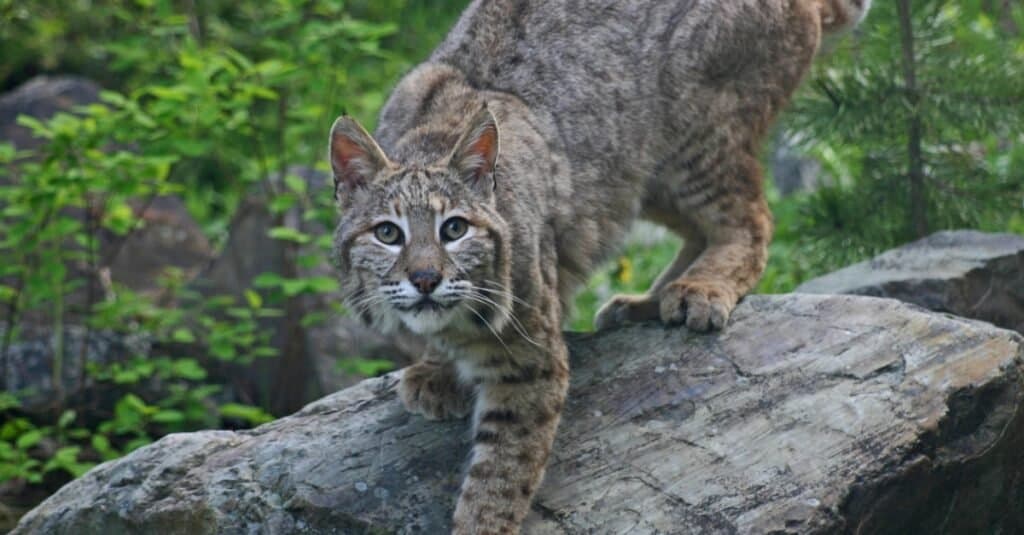
Bobcats can sprint short distances up to 30 mph when hunting prey.
©iStock.com/Anita Elder Design
Up Next:
- Discover the Fastest Animals in New Hampshire
- Discover the Fastest Animals in Oklahoma
- Discover the Fastest Animals in Alaska
The photo featured at the top of this post is © Michal Ninger/Shutterstock.com
Sources
- Wildlife Illinois, Available here: https://www.wildlifeillinois.org/sightings/large-carnivores/mountain-lion/
- Wildlife Illinois, Available here: https://www.wildlifeillinois.org/gallery/mammals/deer-like/elk/
- University of Illinois Urbana-Champaign College of Veterinary Medicine, Available here: https://vetmed.illinois.edu/hospital/wildlife-medical-clinic/wmc-blog/the-northern-cardinal-illinois-state-bird/
- ResearchGate, Available here: https://www.researchgate.net/publication/259729722_Using_Theoretical_Flight_Speeds_to_Discriminate_Birds_from_Insects_in_Radar_Studies_Usando_Velocidades_de_Vuelo_Teoricas_para_Discriminar_Aves_de_Insectos_en_Estudios_de_Radar
Thank you for reading! Have some feedback for us? Contact the AZ Animals editorial team.






